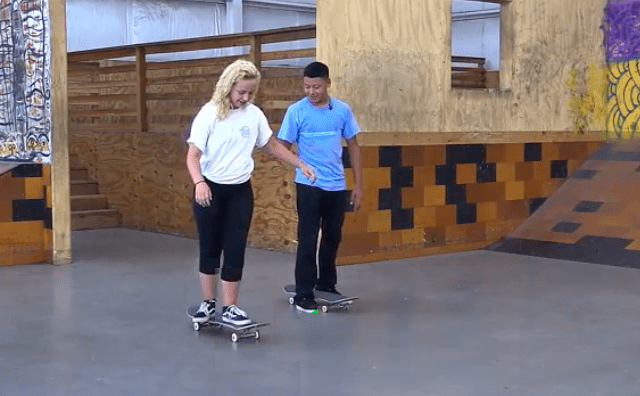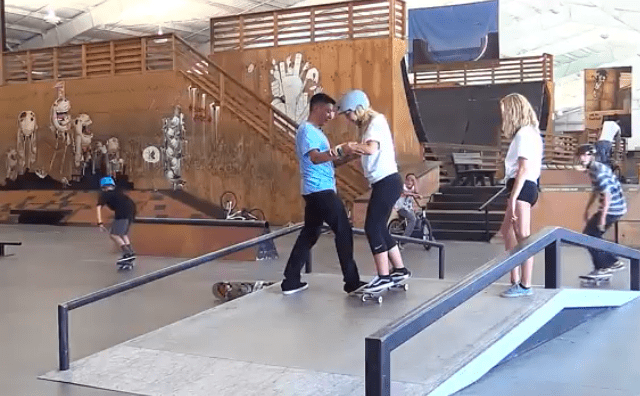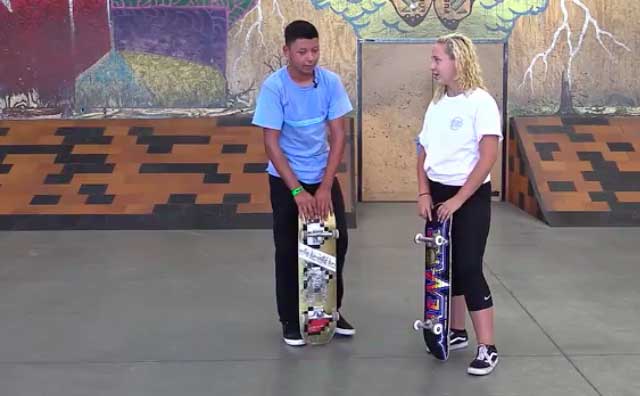How to ride skate, beginners II
Part 1. Get the equipment
Part 2. Staying on the skateboard
Part 3. Keep constancy
Part 2. Remaining standing on skateboard
1. Forget the tricks
What really does not let beginners learn to skate is their desire to skateboard and do ollies before learning the basics. Over time you can do ollies but just like when you learn to play a single guitar chord before you learn to amaze people by playing solo, you have to learn how to play the skateboard and climb into it in a comfortable way. You have to learn to stay on skateboard before you start jumping with it.
2. Try to stand on the skate without falling

There is no right way to stand on skateboard, so put your skateboard on a stable surface like the grass or even a rug, where you will not fall easily, and find out what position you find the most comfortable. Put one foot in front of the other, aligning them more or less with the screws of the axes.
- Regular position means you have your left foot in front of your right foot. Normally, this means that you are going to push with the right foot and ride with the left.
- The goofy position means you have the right foot forward, which means you are going to push yourself with your left foot. Despite the name, there is nothing “unusual” with this posture. It is as common as the regular position.
- The mongo position is more unusual and refers to a posture in which the foot that is forward is used to push. Generally, this position is more uncomfortable for most skaters, but if you feel comfortable, do it! There are no wrong ways to mount.
3. Try to push yourself

On some level surface, stand on the skateboard with one foot forward and take a long and firm step with the other foot to propel you.
- When beginners begin to ride, they tend to take little impulses instead of great impulses. You must take great impulses so that the skateboard feels stable and you can maintain the balance.
4. Return to start position

When you are on the move, you need to put your foot forward, just as you were on the grass, and gently push your foot to the back of the skate. You should flex your knees slightly, keeping you on your two feet and with your back straight to learn how to balance yourself correctly.
- If you are standing correctly, your front foot should be just behind the front axle screws and your rear foot should be at the back of the tail. This is the most stable and safe skateboarding posture.
- This is the hardest part to learn when you are a beginner, but the good news is that you will ride skate very well once you get it. Do not be afraid!
5. Learn to rotate
To rotate, you have to pass your weight forward or back with your ankle, depending on your posture and whether or not you want to go to the right or left. The amount of pressure you use will depend on how tight the skate axis is and how far you want to turn. Begin by practicing on a level surface, move to your forward posture and then make a safe return without falling. This type of return is the most common and is called “carving”.
- To avoid something quickly or to make a closed turn that the carving can not reach, learning to make a kickturn is very useful. With the back foot, lightly press the tail (to slightly raise the front wheels of the ground) and rotate the body in the direction that you want to turn. You must do all this in one move. Be careful not to put too much pressure on the tail, but it can slide until you lose it. Nor do we recommend you do it while you are descending at full speed.
6. Try to stop
There are several ways to stop a skateboard and most of them are more advanced tricks. For a beginner, the easiest way is to gradually slow down and stop by standing on the ground or stepping on the tail of the skateboard.
- To step on the tail, carry most of your weight on the back foot, standing on the tail of the skate and stepping to stop. Some people do not like to do this because they wear the bottom of the tail. However, many skates, especially the flat cruiser models, have a plastic brake designed to help you stop, making them a good choice for beginners.
Part 1. Get the equipment
Part 2. Staying on the skateboard
Part 3. Keep constancy


